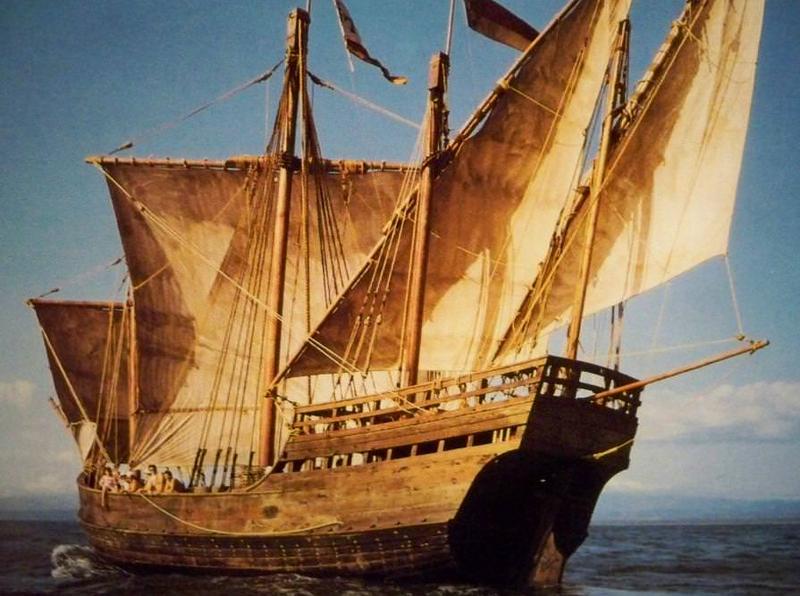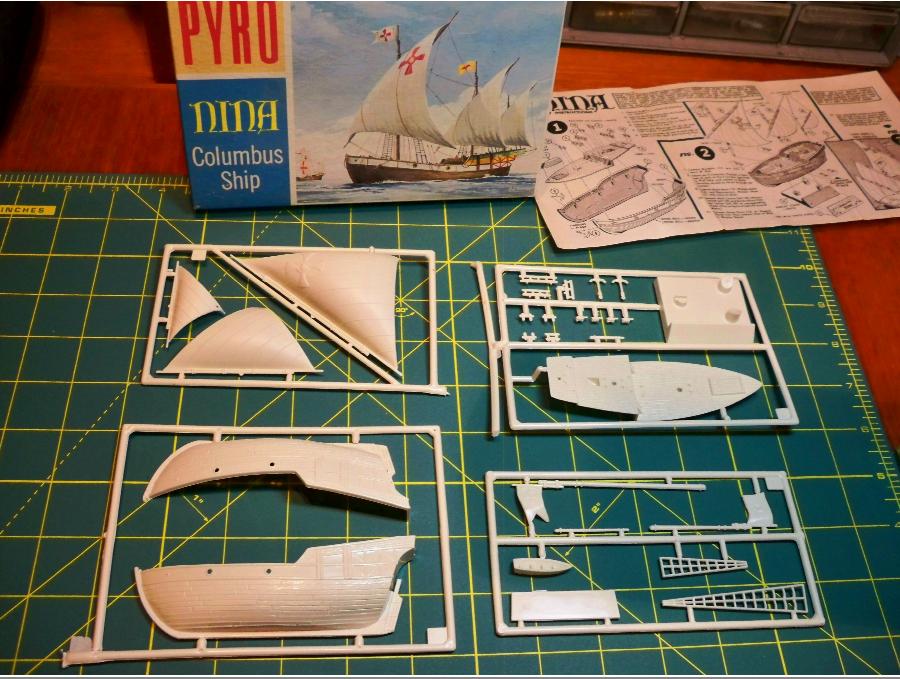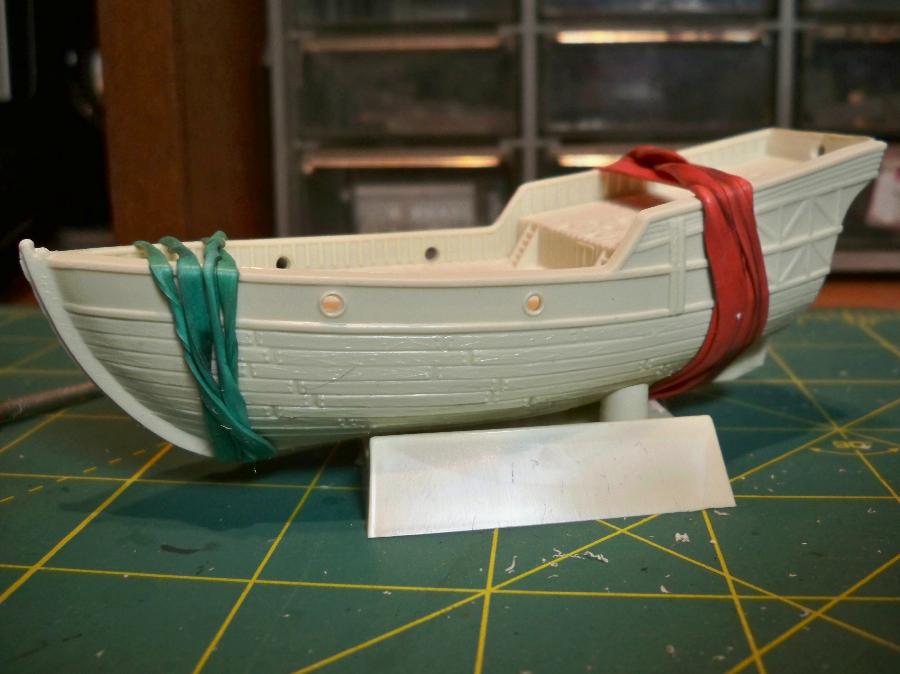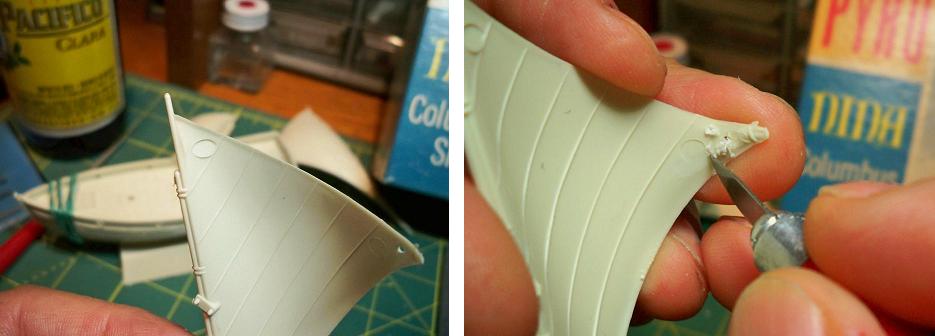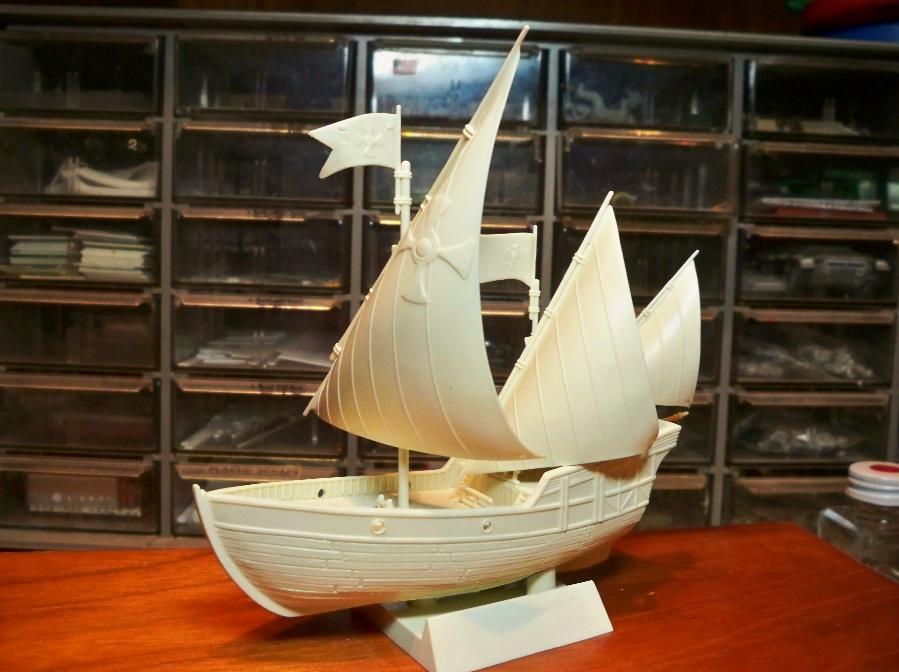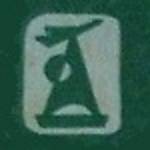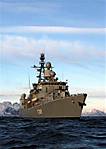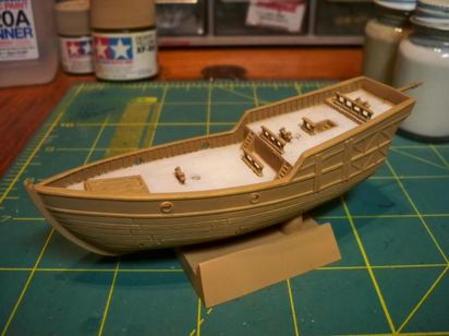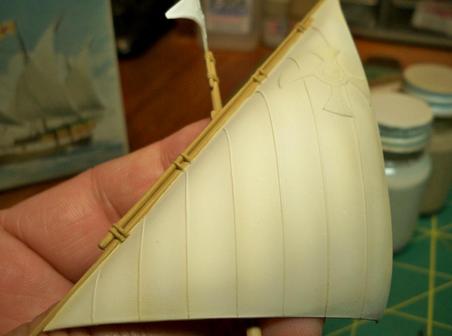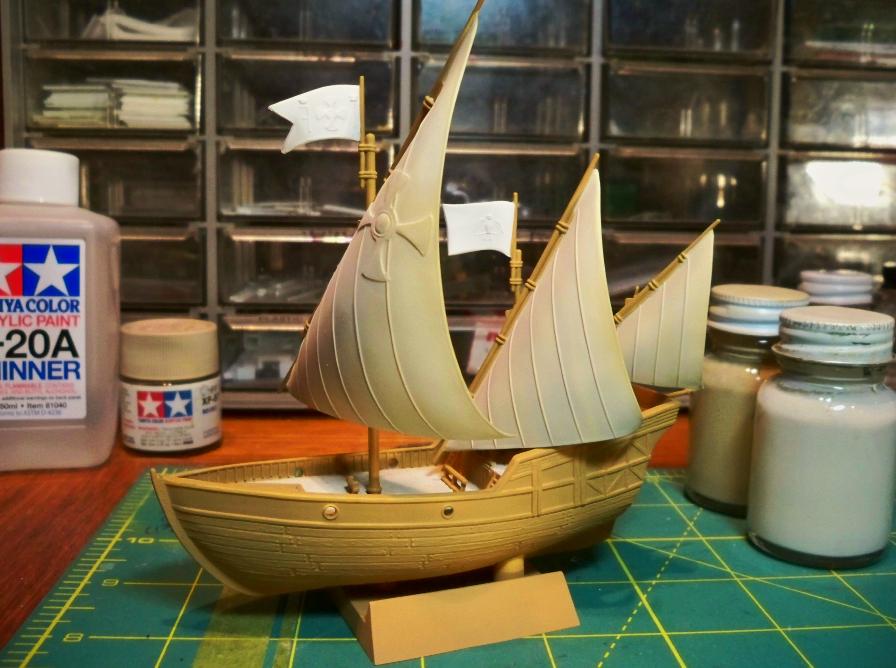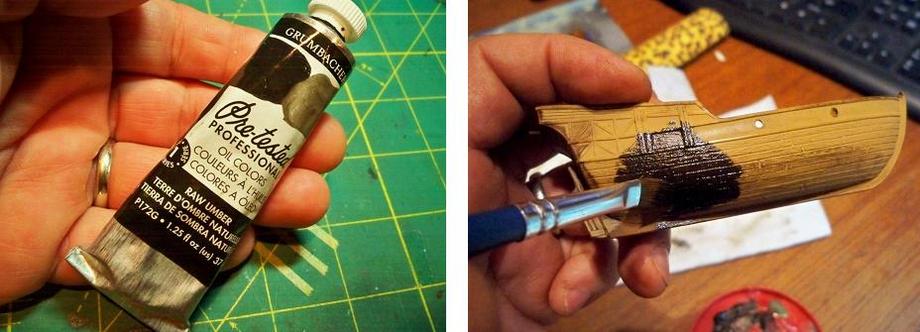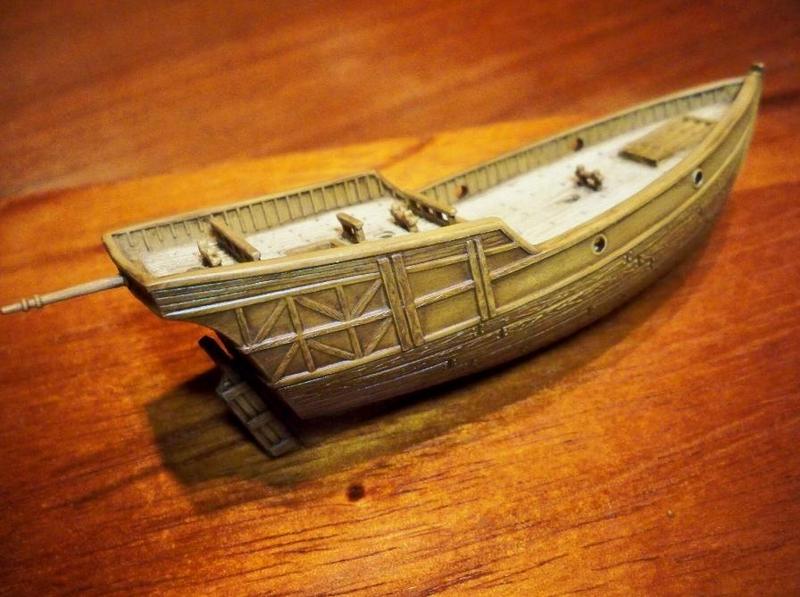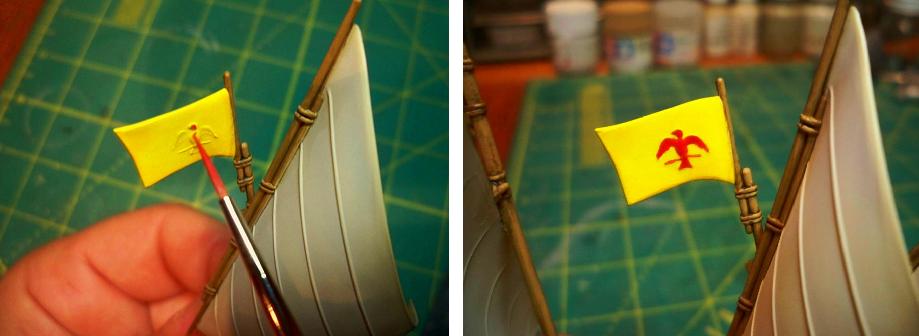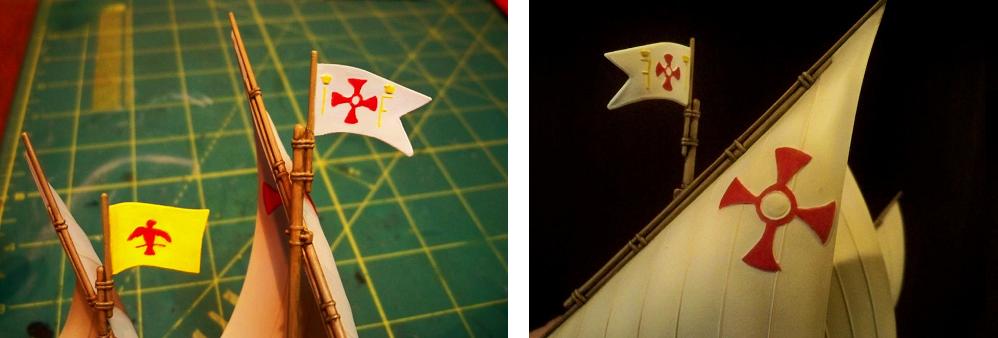Sometimes it is fun to work on something a little different from the steel navy ships I usually build...
I’d picked up Pyro’s old Christopher Columbus’ Niña on the cheap years ago. At the time I wasn’t particularly impressed with the heavy detailing and generally toy-like appearance of the parts, so it had gone straight to the back of my stash. Casting about recently for a quick project, I decided to give it a go.
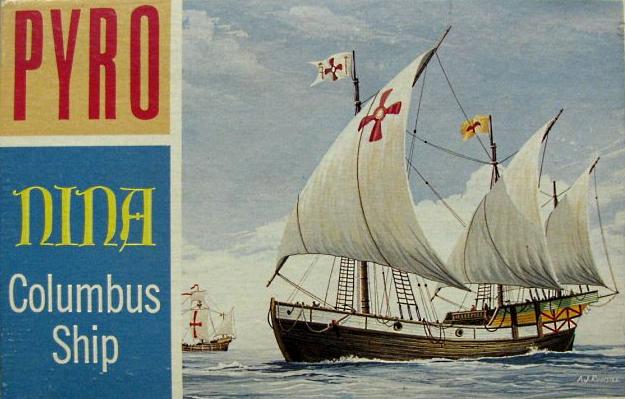
Actually named the Santa Clara, the ship was owned by Juan Niño de Moguer, from which the ship’s nickname Niña (little girl) was derived. Though the smallest among the three ships on Columbus’ first voyage of discovery, the Niña was his favorite, and he sailed aboard her on the way home. In fact, the ship eventually logged over 25,000 miles under Columbus' command. She must have been a handy little vessel; in 1493 she survived a storm off the Azores that so nearly capsized the ship that Columbus and the crew swore to perform religious pilgrimages upon their safe return to Spain. During the second voyage, the Niña was Columbus’ flagship on an exploratory side trip to Cuba, and she was the only vessel in the West Indies (of a fleet of 17) to survive the hurricane of 1495. The next year she brought Columbus and 120 passengers back to Spain – which must have been a miserably crowded passage. I visited aboard a replica of the Niña a while back; I remember thinking at the time that at only about 60 feet in length, the 24 man crew would have been packed pretty closely. One can only imagine what it must have been like crossing the Atlantic with an additional 120 people aboard! In 1497, while engaged in a cargo run from Cadiz to Rome, the ship was captured off Sardinia by pirates - and then recaptured by her captain and some of the crew who had escaped, stolen a boat, and re-boarded the ship. Niña sailed again for the New World the next year as part of Columbus' third voyage, during which Columbus’s men became the first Europeans to set foot on the South American continent. The last record of the Niña is of a 1501 trading voyage to the Pearl Coast of Venezuela, after which she disappears from history...
